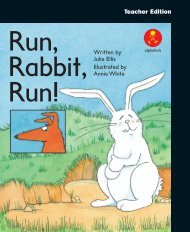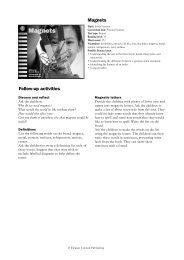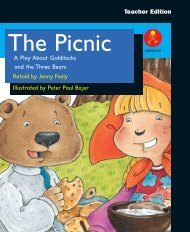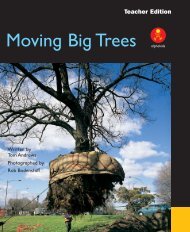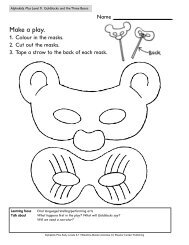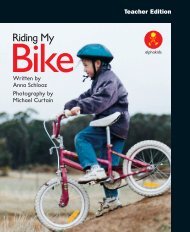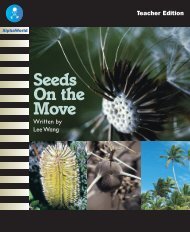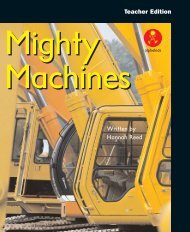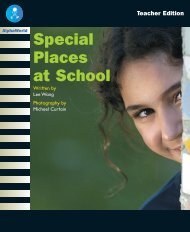My Fish Bowl
My Fish Bowl
My Fish Bowl
- No tags were found...
You also want an ePaper? Increase the reach of your titles
YUMPU automatically turns print PDFs into web optimized ePapers that Google loves.
Being a code breakerExplore the following language features:• Use of full stops and capital letters.• Use of ‘s’ to indicate plural forms:plants, snails, stones.Being a text userRefer to the text when discussing thesequestions:What kind of book is this?Does the book provide enough information tohelp you make your own fish bowl?Refer to the list of suggestions made inthe ‘Setting the context’ section onpage 1.Does the information in the book match ourlist?How is it the same?How is it different?Being a text criticWhat did the author need to know to write thisbook?Do you think the information provided isaccurate?How could we check?Responding to textProvide the children withcellophane and brightly colouredpaper. Have them make their own fishbowls. They could display them in theclassroom window. Encourage thechildren to add labels, mirroring the text.Discuss the sequence of events inthe book with the children. Askthem to make a mini book with asentence about each step. They can thenillustrate their book.Focus on the sound /f/. Provide thechildren with magazines andadvertising brochures. Ask the childrento cut out pictures of anything with the/f/ sound in it and paste them on a chart.WritingHave the children make a set of sequencecards, each one showing one of the stepsinvolved in putting together a fish bowl.These cards can be shuffled, then putback into order by others.AssessmentCan the children:• demonstrate what to do at the end of a line of text?• recall the order in which things were added to the fish bowl?whole text activity sentence activity word activity



